Serum levels of neurofilament light chain and glial fibrillary acidic protein correlate with disease severity in patients with West Nile virus infection
- PMID: 39945666
- PMCID: PMC11849020
- DOI: 10.1080/22221751.2024.2447606
Serum levels of neurofilament light chain and glial fibrillary acidic protein correlate with disease severity in patients with West Nile virus infection
Abstract
West Nile virus (WNV) is a neurotropic mosquito-borne orthoflavivirus, representing a relevant public health threat. Identification of biomarkers that would predict the course of WNV infection is of interest for the early identification of patients at risk and for supporting decisions on therapeutic interventions. In this study, serum levels of glial fibrillary acidic protein (sGFAP) and neurofilament light chain (sNfL), which are markers of brain tissue damage and inflammation, were analysed in 103 subjects with laboratory-confirmed WNV infection, comprising 13 asymptomatic blood donors, 23 with WN fever (WNF), 50 with encephalitis/meningoencephalitis (E/ME) and 17 with acute flaccid paralysis (AFP). In addition, 55 WNV-negative subjects with fever, encephalitis or healthy asymptomatic were included as controls. Age-adjusted levels of both sNfL and sGFAP were significantly higher in patients with neuroinvasive disease than in those with fever or asymptomatic (both WNV-positive and WNV-negative), suggesting a broad association of these biomarkers with systemic inflammation and brain injury resulting from infection. In WNV patients, the combined analysis of sNfL and sGFAP early after symptom onset allowed discrimination between neuroinvasive disease and fever with 67.2% sensitivity and 91.3% specificity, but not between E/ME and AFP. Furthermore, high levels of sNfL and sGFAP were significantly associated with prolonged hospital stay, intensive care unit admission and the occurrence of death or severe sequelae. Detection of WNV RNA in CSF was associated with increased sGFAP. In conclusion, our study indicates the potential utility of sNfL and sGFAP as biomarkers of WNV disease severity and adverse outcome.
Keywords: West Nile virus; acute flaccid paralysis; encephalitis; glial fibrillary acidic protein; neurofilament light chain.
Conflict of interest statement
No potential conflict of interest was reported by the author(s).
Figures
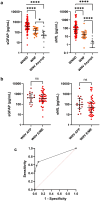
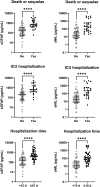
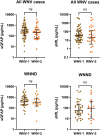
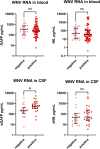
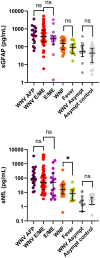
References
-
- World Health Organization . R&D blueprint. Pathogens prioritization: a scientific framework for epidemic and pandemic research preparedness. Meeting report. 30 July 2024. Available from: https://cdn.who.int/media/docs/default-source/consultation-rdb/prioritiz...
MeSH terms
Substances
LinkOut - more resources
Full Text Sources
Medical
